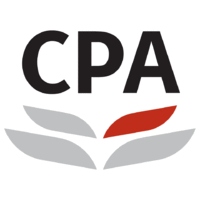


AMGL & Co.
Certified Public Accountants
創嘉會計師事務所
Country/geographic risk
Customers with residence in or connection with high-risk jurisdictions, for example:
-
those that have been identified by the FATF as jurisdictions with strategic AML/CTF deficiencies;
-
countries subject to sanctions, embargos or similar measures issued by, for example, the United Nations;
-
countries which are vulnerable to corruption; and
-
countries that are believed to have strong links to terrorist activities.
In assessing country risk associated with a customer, consideration may be given to local legislation (such as the United Nations Sanctions Ordinance, Cap. 537 and the the United Nations (Anti-Terrorism Measures) Ordinance, Cap. 575), data available from the United Nations,the International Monetary Fund, the World Bank, the FATF, etc. and the TCSP licensee’s own experience or the experience of other group entities (where the TCSP licensee is part of a multi-national group) which may have indicated weaknesses in other jurisdictions.
Customer risk
Determining the potential ML/TF risks posed by a customer, or a category of customers, is critical to the development of an overall risk framework. Based on its own criteria, a TCSP licensee should determine whether a particular customer poses a higher risk and the potential impact of any mitigating factors on that assessment. Application of risk variables may mitigate or exacerbate the risk assessment. Categories of customers whose activities may indicate a higher risk include:
-
Customers conducting their business relationship or transactions in unusual circumstances, for example, there is a significant and unexplained geographic distance between the TCSP licensee and the location of thecustomer.
-
Customers where the structure or nature of the entity or relationship makes it difficult to identify and verify their true owners or controlling interests, such as:
-
unexplained use of corporate structures, express trusts and nominee shares, and use of bearer shares;
-
unexplained delegation of authority by the customer through the use of powers of attorney, mixed boards and/or representative offices;
-
unexplained relationship between the customer’s beneficial owners and controllers and account signatories;
-
in the case of express trusts:
-
an unexplained relationship between a settlor and beneficiaries with a vested right, other beneficiaries and persons who are the object of a power; or
-
an unexplained nature of classes of beneficiaries and classes within an expression of wishes;
-
-
-
Cash (and cash equivalent) intensive businesses including:
-
money services businesses;
-
casinos, betting and other gambling related activities; and
-
businesses that, while not normally cash intensive, generate substantial amounts of cash for certain transactions;
-
-
Charities and other “not-for-profit” organisations which are not subject to monitoring or supervision (especially those operating on a “cross-border” basis);
-
Customers that are, or connected to, politically exposed persons (“PEPs”);
-
Customers buying the products or services with no commercial rationale, who requests for undue levels of secrecy, or where it appears that an “audit trail” has been deliberately broken or unnecessarily layered; and
-
High risk customers and PEPs whose origin of wealth cannot be easily verified.
Product/service risk
TCSP licensees should be mindful of the risk associated with their products or services. There should be an apparently legitimate business, economic, tax or legal reason for the customer to require such product or service from a TCSP licensee. TCSP licensees should pay particular attention to the risks of the following types of products or service:
-
shell companies, companies with ownership through nominee shareholding and control through nominee and corporate directors;
-
services where TCSP licensees actually handle the receipt and transmission of cash proceeds through accounts they actually control in the act of closing a business transaction;
-
services to conceal beneficial ownership from competent authorities;
-
situations where it is difficult to identify the beneficiaries of trusts. This might include situations where identification is hindered because the beneficiary of a trust is another trust or corporate vehicle, or where the trust deed does not include the names of the settlor, the beneficiaries or the class of beneficiaries;
-
commercial, private, or real property transactions or services with no apparent legitimate business, economic, tax, family governance, or legal reasons;
-
payments received from unassociated or unknown third parties which is not a typical method of payment;
-
offers made by customers to pay extraordinary fees for services which would not ordinarily warrant such a premium;
-
services that inherently have provided more anonymity; and
-
products or services which are able to pool underlying customers or funds.
Trusts which are pension in nature may be considered to be of lower risk.
Delivery/distribution channel risk
The distribution channel for products may alter the risk profile of a customer. This may include transactions through online, postal or telephone channels where a non-face-to-face approach is used for establishing business relationship. Business transaction made through intermediaries may also increase risk as the business relationship between the customer and a TCSP licensee may become indirect.